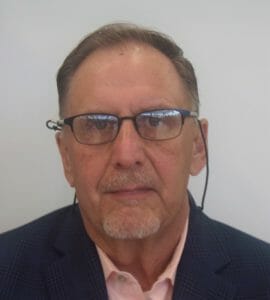
Most owner/operators see high turnover and shortage of workers as the top challenges senior healthcare providers face today, a higher priority than census, reimbursement and regulatory issues.
Many providers have tried band-aid strategies to address this huge challenge, including flex schedules, technology, various bonus programs, ad infinitum! I am sure each provider can add to this list with their own remedies. For senior healthcare providers to move past this challenge, it is time for a paradigm shift in our industry.
Too many providers view labor as a consumable good that can be used up and thrown away. The time has come for workers to be viewed as a long-term investment. For all providers, the largest investment they will make over time is labor.
This workforce investment, strategically planned, will determine the success of the entire organization. Repeating past failed strategies is foolish. The definition of insanity is doing the same thing over and over and expecting a different result.
All service companies have four fundamentals in common: offering, funding, customer management and people management. A fully-developed people management system is critical and needs to be the top priority. This includes a strategic approach to determine the people resource requirements needed to deliver their chosen service lines.
This strategic approach is critical since the major means of production for a service company is its people. What systems, policies, procedures, rewards and training will be needed to be successful? Unfortunately, traditional human resource departments and functions have been and continue to be subservient to operations or finance with their largest goals to process a correct payroll or post and process the Indeed ads.
A strategic approach is needed, and successful providers should develop global strategies around recruitment, onboarding, training, rewards and retention. Currently, most senior healthcare companies fail to deliver a strategic approach to people management, hence the substantial turnover in our industry.
Two key strategic questions a provider must ask when developing a global people management system:
- What makes our employees reasonably able to achieve excellence?
- What makes our employees reasonably motivated to achieve excellence?
Heroic self-sacrifice is not a sustainable strategy; it will only lead to burnout and turnover. Yet all too often, it is the strategy providers rely on. The design of the system should allow the average employee to be successful and survive.
To achieve this global paradigm shift in people management, the following are needed:
- Buy-in from the very top investors, owners and CEO.
- A strategic position at the table for a Chief People Officer (CPO) who reports directly to the CEO!
- The office of the CPO needs to develop and execute a strategic people management plan. This plan should define areas of responsibility, including recruitment, onboarding, benefits, rewards and retention, with leaders overseeing each of these areas.
- Coordination is critical within the People Management department and with Operations and Finance departments.
- From this collaboration, people systems, policies, procedures, rewards and technology can be developed and implemented.
None of these prescriptions will be easy. They require:
- A mindset change
- Commitment
- Focus
- Persistence
The alternative is to continue with the traditional band-aids and live with the high turnover and resulting poor outcomes and higher costs.
Unfortunately, only progressive, far-sighted organizations will attempt these changes. At least until the Medicare and Medicaid systems punish providers for high turnover and the associated lower patient/resident outcomes.
Joe Chesney is a principal at Chesney & Associates and a senior healthcare consultant with over 30 years’ experience serving in nursing home administrator, regional administrator and director of operation positions. Chesney & Associates delivers strategic consulting, leadership development, crisis management and temporary management to senior healthcare providers. For more information, Joe can be contacted at [email protected].
The opinions expressed in McKnight’s Long-Term Care News guest submissions are the author’s and are not necessarily those of McKnight’s Long-Term Care News or its editors.




